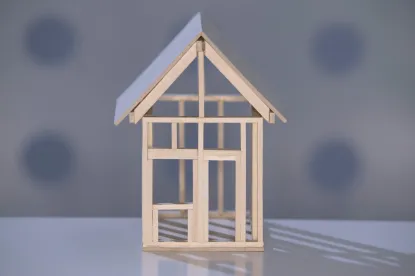Developers and builders who build homes with structural joists manufactured by the Weyerhaeuser Company need be aware of certain issues with Weyerhaeuser’s TJI® Joists with Flak Jacket® Protection. Weyerhaeuser has recently announced that due to a recent formula change, the Flak Jacket coating is defective and emits, or “off-gases”, formaldehyde, a chemical that is hazardous at certain levels. The issue, Weyerhaeuser stated, was isolated to Flak Jacket products manufactured after December 1, 2016.
These joists have been installed in homes across the country. According to the New Jersey Department of Community Affairs (“DCA”), Weyerhaeuser has indicated that there are 320 homes in New Jersey that are affected; all are in various stages of construction. Anectodal evidence suggests there may be more.
Weyerhaeuser has developed and advised of three Flak Jacket remediation methods: replacing the TJI joists entirely; applying a top coating to prevent the formaldehyde emissions; or mechanical removal of the Flak Jacket protection. Weyerhaeuser has distributed written protocols for each option.
The DCA has provided comments on these remediation methods, which should be carefully considered, but has also made it clear that the building community should not expect the DCA to address issues other than fire resistance code compliance. The DCA’s comments on Weyerhauser’s remediation options can be summarized as follows:
Replacement:
If a builder decides to replace the TJI joists with a similar product, the DCA recommends obtaining a letter from the architect stating that the substitution is acceptable and an inspection to ensure that the new components are properly installed. Likewise, if the builder replaces the TJI Joists with a different product, it is to be expected that revised drawings will be required by the municipal officials, as well as an inspection to ensure proper installation.
Top Coating Solution:
If this method is chosen, the DCA advises that additional measures are required to ensure the home continues to meet the applicable fire protection requirements. There is no applicable International Code Council Evaluation Services report that documents the impact of the top coat method on the fire resistance of the Flak Jacket-treated TJI Joists. As such, once a fire-resistance measure is chosen, the DCA recommends revised drawings and an inspection to verify fire protection code compliance.
Coating Removal:
When this method is employed, the DCA advises additional measures to ensure compliance with the fire protections requirements of the IRC. Again, builders must expect an inspection and revised drawings to ensure code compliance.
Beyond heeding the DCA’s advice regarding code compliance, Weyerhaeuser’s announcement raises multiple important questions and concerns for builders and developers. These include:
1) How should builders deal with home buyers, including those under contract, those who have already purchased and future buyers. For instance, how can buyers be assured that the formaldehyde emitted has been reduced to acceptable levels? The DCA has advised that it has no plans to address what is the applicable formaldehyde standard. What disclosures should be made and when?
2) What risks exist as to each TJI joist remediation option.
3) What process or strategy can a builder employ to recoup the costs of replacing the joists and/or remediating the homes, as well as other expenses, from Weyerhaeuser.
Christopher J. Marino and Timothy J. Dehaut also contributed to this article.









 />i
/>i

